LIVING IN THE COMMUNITY: SERVICES AND SUPPORTS FOR PEOPLE WITH DISABILITIES INTRODUCTORY REPORT
April 16 2013
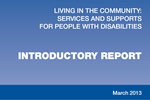
DISABILITY FEDERATION OF IRELAND (DFI)
NOT FOR PROFIT BUSINESS ASSOCIATION (NFPBA)
March 2013
Disability Federation of Ireland
Not for Profit Business Association
March 2013
Researchers: Liza Costello and Wendy Cox

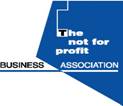
PREFACE
The success in blurring the lines between inclusion and exclusion sometimes makes it difficult to see where the needs and responses associated with disabilities begin and end. Level or ramped pathways; automatic opening and closing doors; audible pedestrian crossings; destination announcements on transport; the availability of “hearing loops”; a guide dog’s head protruding from beneath a table in a restaurant; accessible toilets; and Braille on medical packs – all of these have been supported by the power of goodwill in the community.
The fuel for the engine of goodwill is derived from the work of voluntary organisations and people with disabilities. While some of the areas mentioned above now come under legislative requirements, they had their beginnings in campaigns by the voluntary sector, made up as it is from the people with disabilities themselves, their families and friends, aided by the professionals who help to interpret individual needs into person-centred solutions.
Voluntary organisations that form the subject of this study support the independence and person-centred rights of people with disabilities through various resources and supports. So invisible have these supports become to the uninformed observer that they might not be seen to exist at all but they are there in the episodic help with a life-style issue presenting today and which might not present again for months or years. The interventions of the organisations explored in this study form a type of virtual hyper-market where people with diverse forms of disabilities and very particular needs come for a specialism, a unique form of help or advice or hardware that sustains them as neighbours, participants, spectators and as engaged and disengaged as they wish to be.
The above is not the language of illness or health. Too often we continue even today to look at people with disabilities through a lens which sees them just emerged from the hospital, on their way to a rehabilitation centre or on their way back into medical care.In the last census, 595,335 people declared themselves as having different forms of disability. These are the people for whom the organisations in this study exist as facilitators of their independence and ameliorators of their disabilities.
It is true that there are people with disabilities currently living in inappropriate settings, and this needs to change. Equally true is the fact that there are many more people in the community who need disability specific supports and facilitated access to mainstream services to live ordinary lives.Community based services and supports make key public services like health, housing and education inclusive, in line with the National Disability Strategy, thereby contributing to the State meeting its obligations under the United Nations Convention on the Rights of Persons with Disabilities (UNCRPD). Planning to move people out of inappropriate settings into communities, without at the same time planning to support existing community based services and supports does not make sense. This research contributes to our understanding of the role of disability organisations in providing these kinds of services and supports that enable people to continue living independently in their communities.
John Dolan, CEO, Disability Federation of Ireland
Desmond Kenny, Chairperson, Not for Profit Business Association
INTRODUCTION
This report synthesises the key findings of research commissioned by the Disability Federation of Ireland (DFI) and the Not for Profit Business Association (NFPBA) in September, 2012. It also sets out the policy implications arising from these findings. The research set out to capture the nature, scope, level and quality of the community-based services and supports provided to people with disabilities and their families by voluntary disability organisations.DFI and NFPBA’s decision to commission this work arose out of the need to address the gaps in information in the Value for Money and Policy Review of Disability Services (DoH, 2012) with respect to the work of voluntary disability organisations providing services to people living in the community .
The report notes that:
“The quantification of complex outputs (including respite, early intervention service, home support, personal assistance and multidisciplinary therapies) and outcomes was not feasible within the resources available to the Review….. As a result, the Review concentrated on the collection and analysis of data on outputs that represented the bulk of the funding. This was a pragmatic decision taken out of necessity and does not represent a judgement call on the services and supports not analysed. The identification of services and supports that are not currently defined, measured and costed on a national basis is, in itself, a useful finding” (DoH, 2012: 75).
TheReview also noted the value of these organisations to the sector:
“…some agencies, particularly those serving people with physical disabilities, have developed from a community base with the aim of promoting and protecting client choice, control and independence. These agencies already operate a client-focused model of service and they provide examples of good practice, which can be used to inform decision-making in the wider disability sector.”
The study involved carrying out documentary research and in-depth qualitative interviews with representatives of fifteen disability organisations working with people with physical and sensory disabilities, neurological conditions, as well as people with intellectual disabilities in the provision of services in community settings .
The main research report contains a detailed and rich description of the variety of community services and supports that allow people to continue living in the community. Meanwhile, in thisintroductory report we have set out the context and rationalefor the study, and presented the key findings, conclusions, and recommendations based on the research findings.
KEY FINDINGS AND RECOMMENDATIONS
- The Department of Health should undertake a review of the community based services and supports not examined in the Value for Money Review so that a comprehensive picture of disability services is available on which future planning and policy decisions can be made. This review should build on any data relating to community based services and supports already collected for the Value for Money Review, and in that process develop more effective ways of measuring outputs and outcomes for these types of services and supports. Such a process would facilitate the articulation of a new vision for community services for people with disabilities.
- The voluntary sector as a whole – perhaps through DFI and NFPBA – should be proactive in identifying and analysing existing and emerging good practice models in relation to the evaluation of outcomes and the measurement of the social value of the supports and services they provide. Once an appropriate model is identified, information should be disseminated and training provided so that organisations can apply it as effectively as possible in their own work.
- While national policy, for example, the Value for Money Reviewhas a new emphasis on community settings, and the migration to a new model of service in the community for people with disabilities, the provision of community based services and supports is not new to the organisations participating in the research.
- The voluntary disability organisations who participated in this research are a critical part of the community and mainstream social and health infrastructure. The value of this infrastructure should be maintained, and promoted in developments relating to the agenda for reform for the HSE’s Disability Services Programme.
- Certain key features, reflected in their mission, ethos and at operational level make the organisations an extremely important, and often vital, resource in enabling people to live as independently as possible within their own communities. These features are: a naturally person-centred approach; specialised knowledge and skills; adaptive to change; and being connected and collaborating in the community and beyond.
- A concern was highlighted that the recommendations contained in the Value for Money and Policy Review will be viewed as the only change required for disability services. A concern also exists that national policy decisions will be made that are based on incomplete data, arising from gaps in the analysis of community based services in the Value for Money Review. This could result in jeopardising the effective functioning of these services.
PERSON CENTRED APPROACH
- As many of the participating organisations felt that the true meaning of person-centredness was not fully appreciated, there is a need for a mechanism to support a shared understanding of what exactly a person centred approach involves, and the implications of working in this way.
- Funding models need to be further developed that allow for, and support flexibility in the delivery of person centred supports and services.
- The learning that has been gained over many years with regard to person centred planning should inform future developments in disability policy, including individualised budgeting, and resource allocation models.
- A system needs to be devised with an appropriate methodology that allows for the recording of person centred outcomes as they relate to community based services and supports.
- The research study focused solely on the perspectives of the voluntary disability organisations themselves. Further research exploring the effectiveness of community-based services and supports would benefit from the perspective of people with disabilities and their families who are using these services.
SPECIALIST KNOWLEDGE AND SKILLS
- Due recognition and understanding of the disability specific supports and services provided by these organisations is required in a context wherethe policy direction is to make public services universal, equally open and available to everyone in society. The work of these specialist services facilitates people with disabilities’ access to and use of mainstream health services, as well as other public services.
- Providing a bridge between the person with a disability and the services they require is a distinctive feature of the work of community-based organisations, which needs to be valued accordingly in the development of new models, relating to assessment of need, resource allocation, monitoring of resource use and in agreeing outcomes for people with disabilities.
WAYS OF WORKING
- The flexible and collaborative ways of working that organisations have developed support and facilitate integration and shared learning, and demonstrate good practice that should be promoted.
- Achievements representing significant value for money should be registered in health service accounting systems, such as preventative work that keeps people healthy and out of hospitals.A methodology that allows for the inclusion and measurement of these types of outcomes is required.
- Participating organisations add value in a variety of ways to the services and supports provided on the basis of statutory income. Important forms of added but largely unmeasured value include the widespread use of co-funding; dedication and flexibility of staff in working unpaid overtime hours; the significant contributions of volunteers to support organisations; and providing buildings and facilities for use by statutory and non-statutory bodies.
- The Department of Health/HSE should take these contributions to the health and social infrastructure into account as well as the efficiencies that organisations have already undertaken over the past five years whenimplementing the findings fromthe Value for Money Review.
MEASURING OUTCOMES AND QUALITY
- Inappropriate units of measurement have been used whichin many cases are not suitable to the kinds of services and supports provided by theorganisations participating in this research.The need to be responsive to families and communities, and the kind of brokering work that is necessary can be challenging to measure in terms of standardised assessment systems. Equally, as disability-related needs vary by individual and across the life cycle, the need for flexible provision must be considered when improving systems of measurement for disability services.
- The Service Level Agreement (SLA) needs to be more sophisticated in terms of capturing cases where organisations contribute their own resources to services. In addition, the SLA process should be more aligned with an organisation’s own developing ways of measuring their effectiveness.
- Flexibility needs to be built into the funding and service delivery system to allow for the provision of services across geographical boundaries to ensure a more seamless service for people with disabilities and to avoid overly burdensome administrative procedures.
- The system should incorporate the learning from the outcomes related work undertaken by organisations as part of person centred planning, and this data should feed into national level performance indicators to more properly reflect the reality of service provision.
- Organisations should adopt a policy of continuous improvement in relation to data-gathering and record-keeping. In this regard, there is great potential for sharing information and learning between more experienced and less experienced organisations.
- Good practice examples of outcome measurementfrom other countries were identified in the research, for example the ‘Quality of Life Measurement System’ and the ‘Social Return on Investment’ approach. These models could be adapted appropriately to the Irish context and implemented through a collaborative process with the Department of Health and the HSE.
- Benchmarking against external standards was evident with regard to some organisations. This represents good practice and the learning from this work should be shared across the disability sector more broadly.
CONTEXT FOR THE RESEARCH
Recent reports on the HSE’s Disability Services Programme are guiding decision-makers on the reform agenda, adopting a very welcome person centred approach to services. The Value for Money Review aimed to evaluate the efficiency and effectiveness of disability services in Ireland wholly or partly funded by the HSE.It was acknowledged in the Reviewhowever, that the analysis was limited in terms of its coverage and understanding of community based services. Such services have developed from a community base, use a person centred model of service, and aim to promote choice, control and independence.In addition, the Review’s focus was primarily on the measurement of unit cost in the context of a fixed service delivery pattern of institutional care which does not reflect the entirety of services available to people with disabilities. This report attempts to explore the disability services and supports that were not reviewed in the report.
As highlighted in the quote from the Value for Money Review above, these examples of good practice can be used to inform decision-making in the wider disability sector.Voluntary disability organisations are an important resource in supporting people with disabilities to live in the community and many of the services provided by these organisations can and should be considered to be “mainstream disability specialist services and supports”. A key focus of their work is prevention, in terms of keeping people healthy, out of high cost residential services, and in a position to take advantage of services and opportunities available in community settings. This is because the organisations either provide or promote improved supports for people with disabilities to live in their own communities.
This research set out firstly, to describe the role, functions, and significance of community-based disability services and supports, and secondly, to explore in more detail features of good practice. The research also sought to explore improvements/developments in the extent, level and quality of the supports provided by the organisations, particularly in identifying and responding to individual needs.
PROFILE OF ORGANISATIONS
The organisations participating in the research support a very wide range of people, with different conditions, and needs, and have developed extensive knowledge and built up important networks of contacts and working relationships, in many cases over decades. Many organisations have built up a wide geographical reach and solid local ‘embeddedness’ over time, and consciously nurture this as one of their most valuable attributes. The organisations exhibit a strong, progressive, shared ethos, which focuses on rights and equality, the centrality of the individual, the promotion of independence, social inclusion, participation, and the opportunity to lead a life of one’s own choosing.
Organisations may mainly work with individuals in relatively stable situations; others may support individuals with progressive conditions whose health gradually deteriorates; and there are organisations which support people whose need is unpredictable due to the episodic nature of their condition. Most of the organisations now have management systems which allow for careful tracking of their clients, and the total number of clients, based on 13 detailed responses was almost 65,000 .
The variety in the level and type of state funding provided to the fifteen organisations to support service provision is notable.Participating organisations received varying levels of financial support from the HSE, with five receiving less than 60% (some significantly less) and with four almost deriving their total income from HSE sources.Most organisations are continuously involved in seeking other income to enable the co-funding of supports, services and facilities, for example through fundraising and through securing funding from other statutory sources including FÁS, Pobal, the Family Support Agency, and Lottery funds, as well as EU project funding.
Over the past number of years, organisations have implemented cutbacks including for example, widespread staffing cuts, including at senior management level, reductions in salaries and on-going review of staffing rosters. Most organisations have also made significant reductions across all non-pay items, which clearly effectthe provision of services and supports, and the need to invest more time and resources in fundraising and other income generating activities to cover costs.
The uniform way in which cuts have been applied was seen as inequitable by many organisations interviewed, especially those with lower levels of HSE funding, and/or those who have already achieved efficiencies and had the same cut as those who have not.For many organisations, their private income from fundraising and donations has fallen; in particular national-level fundraising income has been affected by the fall in discretionary spending.
Alongside declining income, organisations face increasing demand for their services for a variety of reasons including
- (a) the population of people with a particular condition is increasing as people are living longer with that condition,
- (b) there are huge pressures on other health and social services, especially statutory health services,
- (c) individuals who might in better times have been able to pay for treatment and supports, not provided by statutory health services are no longer able to do so.
PERSON CENTRED APPROACH
Being person-centred emerged as an inherent characteristic of participating organisations, one that was rooted in their mission and practice. It was a core aspect of both their underlying ethos and their delivery of supports and services. It was understood as an approach that involves listening to the individual and working towards meeting their expressed needs and aspirations, an approach that is closely linked to the way in which organisations had emerged and evolved, and to the vision for disability services as described in the Value for Money Review and other policy reports.
The person-centred nature of these organisations manifests itself in many ways. Not surprisingly, it is clearly reflected in the development of plans and setting of goals with service users.Person-centred planning was also cited as a very powerful way of measuring the achievements and efficacy of an organisation. This was particularly strong among organisations that engaged in a very formal person-centred planning process, because this process involved the setting of clear and specific targets.
Responding to the fluctuating nature of need meant that assessments of need incorporated a practical and flexible focus, responding to needs that can vary from person to person, across time, and across the lifecycle. Enabling independence was grounded in organisations’ philosophy and ethos and a common goal in the person centred planning process. Aiming to maximise an individual’s independence may mean for example, the provision of a high quality PA (Personal Assistant) service, or moving people from large-scale residential to independent accommodation. For others it means intervention as soon as possible after onset or diagnosis, or providing a ‘pre-care’ level of support, through for example, training programmes.
The need for flexibilitymeans that the necessary supports are provided only when the individual needs them. An organisation can link in with people at important points during their life cycle, for example,to provide the support and training needed to enable an individualto live in a new area.
Being person-centred entails a certain level of unpredictability, as it is based on the individual’s own support needs as they arise. Consequently, taking this kind of approach can make it difficult for the organisation to price the supports they provide.
SPECIALIST KNOWLEDGE AND SKILLS
Provision of specialist supports to people with disabilities plays a central role in enabling many to live in the community, where they can avail of mainstream supports and services. Organisations described one of their central roles as the provision of a bridge between the person with a disability and the other services they require, an essential bridge because principles still lag behind practice (incomplete primary care networks, for example). This special bridging role is vital to the mainstreaming agenda, and to the realisation of the National Disability Strategy, and ultimately to the principles and rights of the United Nations Convention on the Rights of Persons with Disabilities (UNCRPD).
Participating voluntary disability organisations receiving State funding to provide supports and services saw themselves as being both specialist and mainstream, and very definitely an integral part of the whole infrastructure of services that enables people with disability to live as well and as independently as possible in their families and communities.
Specialist knowledge of specific conditions and impairments emerged as an important aspect of organisations’ work. Some have responded to gaps in mainstream health services by either providing or facilitating access to specialised clinical interventions. Some provide dedicated support workers to help people with disabilities access the medical support they need, and many of them regularly inform and train mainstream healthcare professionals in relation to specific conditions. All of them provide much needed specialist information and advice to the individual with a specific condition or impairment, as well as on relevant benefits and entitlements.
Their specialist knowledge and expertise also extends beyond the medical nature of specific impairment and conditions and associated clinical support needs and ranges across many fields. For example, many provide both planned and emergency respite support; and personal assistant services. Assistive and communication technology form a strong, and growing, feature of the support provided by some organisations.
Wide ranging social supports and opportunities for social interaction were provided in response to an increased risk of social isolation. Participating organisations all spoke of the importance of such supports in enabling meaningful participation in the community, and many also are working to improve the accessibility of the local community and environment. Dedicated community-based social opportunities are equally important such as those provided by resource centres. Other examples include peer support groups and the very popular holiday camps run by some organisations, which play an essential role in addressing social isolation, while also providing respite support for carers.
WAYS OF WORKING
A strong culture of change, review, and innovation was found among many of the participating organisations in the face of an ever changing social and economic environment. The user directed rather than service directed nature of organisations’ work emerged as good practice. Adopting a flexible and holistic approach in meeting the needs of people was a key feature of the work. It was emphasised thatservices and supports that are adaptable provide better outcomes for individuals.Flexibility was demonstrated for example, by participating organisations in supporting the varied needs of clients in accessing clinical care.
Examples of adapting to change in innovative ways was evidenced by an organisation filling a service gap through setting up a supplementary private personal assistance service; and by adapting ‘overly medicalised’ training courses to make them relevant to caring for people in their own homes and within the community.
Flexibility was also a feature of collaboration with other services and organisations. As disability-related needs vary by individual and across the life cycle, so must organisations’ approach to collaboration and referral be flexible and fluid.
Across the fifteen organisations there was a wide range and variety of connections and collaborations. Building a natural support plan for a person involved establishing connections and collaborations with a variety of staff across a broad range of statutory and non-statutory organisations/bodies, as well as with family, friends, personal advocates and other people chosen by the person. Developing relationships of trusts and collaboration in this way support effective delivery of health and social care services for people with disabilities.
Effective collaboration and shared learning took place across the Department of Health and HSE structures, in the form of implementation groups, task force, and various consultation mechanisms. Organisations have been contributing to policy development and design in numerous ways, drawing on the learning from the ground and feeding this into a variety of policy structures including, the Congregated Settings Implementation Group; the New Directions Implementation Group; as well as the HSE Consultative Fora.
Organisations were also very active in terms of collaboration on local/regional disability platforms, county boards and local authority planning and decision-making bodies. This type of engagement gives a stronger disability perspective and voice in these local level structures.
Good practice was also demonstrated by the work of national alliances including the Neurological Alliance of Ireland, the Care Alliance, and the Irish Lung Health Association, where experience and examples of good practice can be shared, and in some cases collective pressure generated for much needed change.
Reconfiguration of services is another example of where organisations are adapting to change in innovative ways. Examples included changing a sheltered workshop into a series of vocational training programmes; use of online tools to support people; incorporating the findings of key policy reports such as New Directions (HSE, 2012) to develop and improve services and supports; greater involvement of young graduates to support service delivery; and switching from providing support in the home to more centre-based provision.
Measures in support of increased efficiency and effectiveness were also considered in the research. In order to safeguard services, organisations have taken many steps to reduce expenditure in all pay and non-pay related areas including procurement, sharing premises, cutting salaries, negotiating cheaper rents, switching telephone provider, and reducing stationery costs.
The recommendations from the Value for Money Review were cited by many organisations as having already been implemented, long before the review was published.These included for example, carrying out assessments over the phone rather than in person; setting up a national contact centre to screen at one central level; redeployment of professional staff; less travel and greater use of multimedia resources; as well as greater use of volunteers. Organisations were also exploring possibilities of maintaining services while addressing potential funding deficits through establishing formal strategic partnerships with other organisations.
The person-centred, practical support services these organisations provide can reduce overall costs in many obvious ways, the most obvious being preventing or delaying hospital or nursing home admissions. The process of reducing or avoiding health-related costs can also occur in more subtle ways, where community resource staff work to help people reduce their stress levels, for people with epilepsy, as stress is a major factor in epileptic seizures. PA services or rehabilitative training can enable an individual to go back to work, or free a carer to take up employment, or find more balance in outside activities.
Contributions to the social and health infrastructure not attributable to HSE funding included co-funding; staff working extra hours on a voluntary basis; and senior staff participating on County Boards, community organisations or as part of local disability platforms.Other contributions identified were specialist knowledge enhancing the quality of statutory health services through information provision and direct training; specialised expertise and the latest thinking about clinical and therapeutic practice; funding for clinical research contributing to improving national medical services; and careful use of volunteers in service delivery.
MEASURING OUTCOMES AND QUALITY
Participating organisations saw themselves as almost invisible within the account of disability services within the Value for Money Review. They felt that they were well placed to contribute to a reshaping of the system and to respond to the requirements for accountability, efficiency, effectiveness and developing appropriate outcome measurements.
The issue of cross boundary working also arose in this research, where due to HSE administrative structures, organisations are required to negotiate and operate a large number of SLAs across many geographical areas. In particular, it was felt that the flexibility of voluntary disability organisations is not matched by a corresponding flexibility from HSE Local Health Offices, leading to what has been termed as ‘funding silos’. Such arrangements can work to the detriment of someone with a disability as the needs of a person can be caught between two systems.
Accountability was discussed by organisations in terms of accountability to stakeholders, and with regard to legal requirements. Accountability relationships with the HSE centred on discussion of the Service Level Agreement (SLA), and in particular, its lack of focus on defined outcomes to be achieved by clients. A range of views were expressed in terms of the current system of measurement of effectiveness, and efficiency. Some organisations felt that there was an over-emphasis on financial factors, to the detriment of more person-centred requirements, while others considered the requirements for specific quantifiable outputs can contribute to transparency and accountability. Some considered that a ‘one size fits all’ approach did not allow for definitions of effectiveness as understood by organisations and people with disabilities.
Frustration was also expressed about the lack of common understanding between the HSE and organisations on the language of outputs and outcomes.Across the board there was a clear consensus on the principle of evaluating personal outcomes, and it was also agreed that finding ways to ‘count’ such things appropriately and sensitively is the key immediate challenge – one where the voluntary sector is in a position to offer experience and leadership.
A number of organisations are actively working to devise new systems which can capture a range of outcomes and indicate the quality of the service they provide. Ways in which organisations already incorporate monitoring and evaluation of outcomes into their work included a key worker’s agreed plan containing goals and time-frames; and where a time-limited service is provided, desired outcomes specified at the outset and progress measured over that time period. In situations of longer term support of clients, person centred planning approaches and joint assessments at set intervals provide information on attainment of goals.
Examples of outcome indicators currently being measured included: rates of progression to employment/education/training; self-assessment following participation on a physiotherapy programme; ‘before’ and ‘after’ assessments; monitoring of the individual plan of care and recording of its health related outcomes; and FETAC qualifications gained.
Most available outcome measurement systems are simplistic in relation to most ‘complex scenarios’ of disability, particularly those of individuals with progressive conditions. The difference between short and long term impact and outcomes was highlighted; as well as using both subjective and objective measures.
The research demonstrated good practice examples of outcome measurement from other countries, such as quality of life measures, ‘Quality of Life Measurement System’, a web-based personal planning system in use in the UK,and the Social Return on Investment (SROI) approach.
Benchmarking practice against external standards featured to a greater or lesser degree. Accreditation systems such as PQASSO were undertaken by a number of organisations; the Governance Code for Community, Voluntary and Charitable Organisations was also subscribed to; accreditation through EQUASS (European Quality Assurance in Social Services) which operates a system for benchmarking services with a person-centred approach; European Framework for Quality Management (EFQM); National Quality and Excellence awards; input in the development of the Draft National Quality Standards for Residential Services for People with Disabilities; UK based CHKS , a standards body for clinical care settings.
Conclusion
This research increasesour understanding of community based services for people with disabilities and is an important development in strengthening our analytical knowledge in support of improvements in quality, efficiency and effectiveness. Work remains to be done for example, in relation to identifying real outcomes for people with disabilities and for services, and in finding ways of measuring these outcomes that go beyond one-dimensional measurements to fully capture the value of the multi-faceted contribution of the voluntary disability sector. In addition, this data needs to be used to inform organisational and national level performance indicators, as well as the development of resource allocation models.
It is important to understand thatthe work of some voluntary disability organisations was not fully taken into account, or adequately valued, in the recent charting by policy-makers of new directions for disability policy and practice in the Value for Money Review. These organisations have much to contribute based on their long-established work in the community with people with disabilities, and they are open to bringing their knowledge and experience into new ways of working and new forms of relationships with statutory funders.
Appendix 1: List of Participating Organisations in the Research
| Organisation | Date founded | Mission |
|---|---|---|
| Arthritis Ireland | 1981 | To help people live a good life with arthritis. Provide information and training for those with arthritis. |
| Epilepsy Ireland | 1966 | Committed to improving the lives of people with epilepsy in Ireland. |
| Cystic Fibrosis Association of Ireland | 1963 | To improve the treatment and facilities for people with cystic fibrosis in Ireland. To increase knowledge and awareness and give advice and support to people with CF and their families. |
| Cheshire Ireland | 1963 | Providing a range of support services for people with disabilities. Committed to empowering people with disabilities to live independently. |
| Central Remedial Clinic | 1951 | Leading the way for children and adults in Ireland with physical and multiple disabilities. |
| Enable Ireland | 1948 | To work in partnership with those who use our services to achieve maximum independence, choice and inclusion in their communities. |
| Headway | 1985 | To bring positive change in the lives of those affected by an acquired brain injury. |
| Irish Wheelchair Association | 1960 | A national organisation dedicated to the achievement of full social, economic and educational integration of people with physical disabilities as equal, independent and participative members of the community. |
| Muscular Dystrophy Ireland | 1972 | Muscular Dystrophy Ireland provides information and support to people with muscular dystrophy and related neuromuscular conditions, and their families, through a range of support services. Its objective is to promote, through practical empowerment, independent living for people with muscular dystrophy. MDI supports advocating for services to enable people with neuromuscular conditions to fully participate in society, and to live a life of their own choosing. MDI also aims to support and fund research into neuromuscular conditions. |
| MS Ireland | 1961 | To enable and empower people affected by Multiple Sclerosis to live the life of their choice to their fullest potential.Providing information, support and advocacy services to the MS community. Providing timely, person-centred services that create independence and choice for the person with MS and their family. |
| NCBI | 1931 | To promote the independence of people who are blind or vision-impaired. |
| National Learning Network* | 1995 | Vision: A world of equal opportunities through learning. Mission: To promote equality by providing world-class training, education and employment access services and by actively influencing the creation of a more inclusive society. |
| RehabCare* | 1996 | Vision: Every person living life to the full and valued for and as themselves. Mission: RehabCare is the provider of choice of person-centred, health and social care services that facilitate people who are disadvantaged to participate in the life of their local community in ways that match their choices, aspirations and needs. Operates a wide variety of responsive health and social care services which reach into communities the length and breadth of Ireland. |
| County Roscommon Disability Support Group Ltd | 1989 | County Roscommon Disability Support Group Ltd (RSG ) is committed to improving the quality of life and the standards of services to all people with disabilities, older people and children |
| West Limerick Centre for Independent Living | 1997 | Providing personal support services for people with disabilities to ensure that they achieve independent living and full participation in society. |
**Both are members of the Rehab Group, which was itself founded in 1949.
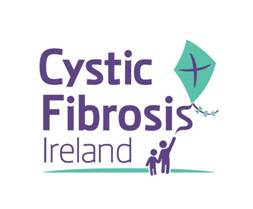
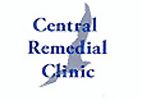



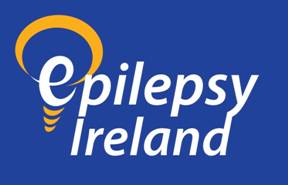

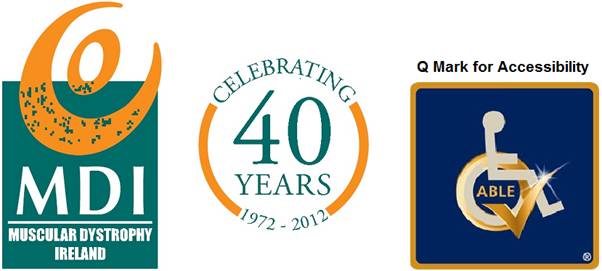

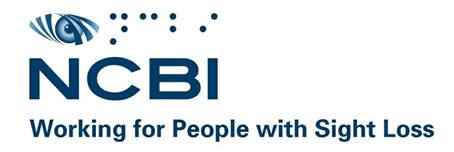


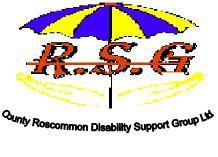
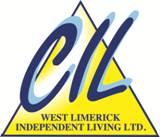
The Disability Federation of Ireland (DFI) represents the interests and the expectations of people with disabilities to be fully included in Irish society. It comprises organisations that represent and support people with disabilities and disabling conditions.
The vision of DFI is that Irish society is fully inclusive of people with disabilities and disabling conditions so that they can exercise their full civil, economic, social, and human rights and are enabled to reach their full potential in life. DFI’s mission is to act as an advocate for the full and equal inclusion of people with disabilities and disabling conditions in all aspects of their lives.
There are over 126 organisations within membership, or as associates, of DFI. DFI also works with a growing number of organisations and groups around the country that have a significant disability interest, mainly from the statutory and voluntary sectors. DFI provides information, training and support, networking, advocacy and representation, research and policy development / implementation, and organisation and management development.
DFI works on the basis that disability is a societal issue and so works with Government, and across the social and economic strands and interests of society.
Disability Federation of Ireland, Fumbally Court, Fumbally Lane, Dublin 8
Tel: 01-4547978, Fax: 01-4547981
E-mail: info@disability-federation.ie web: www.disability-federation.ie
The Not for Profit Business Association (NFPBA) was formed in 1998 and consists of the 8 leading voluntary/charitable organisations supplying services, principally to people with physical disabilities and with sensory disabilities. The members of the association are Central Remedial Clinic; Cheshire Ireland; DeafHear; Enable Ireland; Irish Wheelchair Association; NCBI; National Learning Network; and RehabCare.
The services provided through NFPBA members are, in the main, personal, social services. Services include supported accommodation, residential care, housing, respite care, personal assistant, care attendant, home help services, education, independent living, transport, support with assistive technologies, sensory mitigating interventions, assessment, therapeutic services, day activation services, vocational training, sheltered occupational services, supported employment and information and advice services. These services are mainly based in communities, in mainstream settings, promote social inclusion and community participation and are very successful in ensuring mainstream individual quality of life outcomes for individuals.
The association represents the business interests of its members as service providers, particularly in view of the need to combine the care ethos of the past with a commercial ethos to deal with current and emerging market forces. Through the association, a platform of combined effort and commitment is provided to manage the change.
Not for Profit Business Association, Unit G9, Calmount Park, Ballymount, Dublin 12
Unit G9, Calmount Park, Ballymount, Dublin 12
Tel: +353 (0)1 4293600, Fax: +353 (0)1 4600919
E-mail:info@notforprofit.ieweb:www.notforprofit.ie
